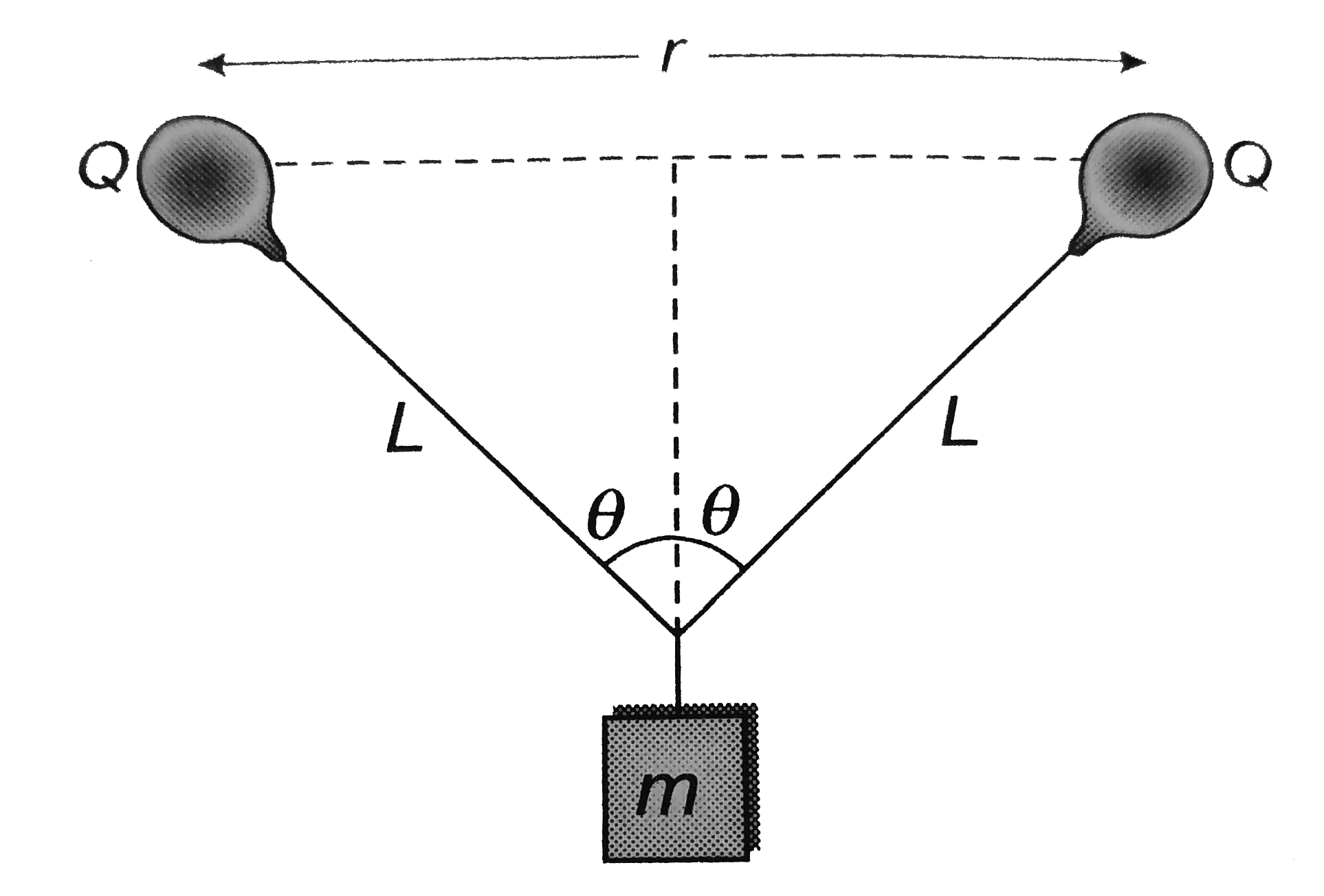A weather forcecasting plastic balloon of volume 15m3 contains hydrogen of density 0.09kgm−3. The volume of an equipment carried by the balloon is negligible compared to its own volume. The mass of empty balloon alone is 7.15 kg. The balloon is floating in air of density 1.3kgm−3. Calculate (i) the mass of hydrogen in the balloon. (ii) the mass of hydrogen and balloon, (iii) the total mass of hydrogen, balloonand equipment if the mass of equipment is x kg. (iv) the mass of air displaced by balloon and (v) the mass of equipment using the law of floatation.
The correct Answer is:(i) 1.35 kg (ii) .5 kg (iii) (.5+x)kg (iv) 19.5kg(v)11kg
To solve the problem step by step, we will calculate the required quantities one by one.
Step 1: Calculate the mass of hydrogen in the balloon.
The mass of hydrogen can be calculated using the formula:
Mass of hydrogen(mh)=Density of hydrogen×Volume of balloon
Given:
- Density of hydrogen = 0.09kg/m3
- Volume of balloon = 15m3
Substituting the values:
mh=0.09kg/m3×15m3=1.35kg
Step 2: Calculate the mass of hydrogen and the balloon.
The total mass of hydrogen and the balloon can be calculated as:
Total mass=Mass of hydrogen+Mass of balloon
Given:
- Mass of empty balloon = 7.15kg
Substituting the values:
Total mass=1.35kg+7.15kg=8.50kg
Step 3: Calculate the total mass of hydrogen, balloon, and equipment.
Let the mass of the equipment be xkg. The total mass can be expressed as:
Total mass=Mass of hydrogen+Mass of balloon+Mass of equipment
Substituting the known values:
Total mass=1.35kg+7.15kg+x=8.50kg+x
Step 4: Calculate the mass of air displaced by the balloon.
The mass of air displaced can be calculated using the formula:
Mass of air displaced=Density of air×Volume of balloon
Given:
- Density of air = 1.3kg/m3
Substituting the values:
Mass of air displaced=1.3kg/m3×15m3=19.5kg
Step 5: Calculate the mass of the equipment using the law of flotation.
According to the law of flotation, the total weight of the balloon (hydrogen + balloon + equipment) is equal to the weight of the air displaced. Thus:
Mass of air displaced=Mass of hydrogen+Mass of balloon+Mass of equipment
Substituting the known values:
19.5kg=1.35kg+7.15kg+x
19.5kg=8.50kg+x
Solving for x:
x=19.5kg−8.50kg=11kg
Summary of Results:
1. Mass of hydrogen = 1.35kg
2. Mass of hydrogen and balloon = 8.50kg
3. Total mass of hydrogen, balloon, and equipment = 19.5kg
4. Mass of air displaced by balloon = 19.5kg
5. Mass of equipment = 11kg
The mass of hydrogen can be calculated using the formula:
Mass of hydrogen(mh)=Density of hydrogen×Volume of balloon
Given:
- Density of hydrogen = 0.09kg/m3
- Volume of balloon = 15m3
mh=0.09kg/m3×15m3=1.35kg
The total mass of hydrogen and the balloon can be calculated as:
Total mass=Mass of hydrogen+Mass of balloon
Given:
- Mass of empty balloon = 7.15kg
Total mass=1.35kg+7.15kg=8.50kg
Let the mass of the equipment be xkg. The total mass can be expressed as:
Total mass=Mass of hydrogen+Mass of balloon+Mass of equipment
Substituting the known values:
Total mass=1.35kg+7.15kg+x=8.50kg+x
The mass of air displaced can be calculated using the formula:
Mass of air displaced=Density of air×Volume of balloon
Given:
- Density of air = 1.3kg/m3
Mass of air displaced=1.3kg/m3×15m3=19.5kg
According to the law of flotation, the total weight of the balloon (hydrogen + balloon + equipment) is equal to the weight of the air displaced. Thus:
Mass of air displaced=Mass of hydrogen+Mass of balloon+Mass of equipment
Substituting the known values:
19.5kg=1.35kg+7.15kg+x
19.5kg=8.50kg+x
Solving for x:
x=19.5kg−8.50kg=11kg
1. Mass of hydrogen = 1.35kg
2. Mass of hydrogen and balloon = 8.50kg
3. Total mass of hydrogen, balloon, and equipment = 19.5kg
4. Mass of air displaced by balloon = 19.5kg
5. Mass of equipment = 11kg
Topper's Solved these Questions
- BOOK - ICSECHAPTER - UPTHRUST IN FLUIDS, ARCHIMEDES' PRINCIPLE AND FLOATATIONEXERCISE - EXERCISE 5(c) (Multiple Choice Question)3videos
UPTHRUST IN FLUIDS, ARCHIMEDES' PRINCIPLE AND FLOATATION
- BOOK - ICSECHAPTER - SOUNDEXERCISE - TOPIC 2 Infrasonic and Ultrasonic Waves ( 3 Marks Questions)3videos
SOUND
Similar Questions
Knowledge Check
- Question 1 - Select One
A helium filled balloon will float in air because
AThere is more air than heliumBHelium is as dense as airCHelium is less dense than airDHelium is more dense than air
_______ is used in weather balloons.
View SolutionA balloon has 5.0 mole of helium at 7∘C. Calculate
(a) the number of atoms of helium in the balloon.
(b) the total internal energy of the system.View SolutionCalculate the pressure exerted by hydrogen if the density of hydrogen is 0.09 kgm−3 and rms speed of hydrogen molecule at that presure is 1.84kms−1.
View SolutionTwo similar balloons filled with helium gas are tied to Lm long string. A body of mass m is tied to another ends of the strings. The balloons float on air at distance r. If the amount of charge on the ballons is same then the magnitude of charge on each balloon will be
 View Solution
View SolutionA balloon has 5.0 g mole of helium at 7∘C Calculate
(a) the number of atoms of helium in the balloon,
(b) the total internal energy of the system.View SolutionWhy is dihydrogen not preferred in weather balloons these days?
View SolutionThe volume of a balloon is 1000m3. It is filled with helium of density 0.18kgm−3. What maximum load can it life. Density of air is 1.29kgm−3
View Solution

